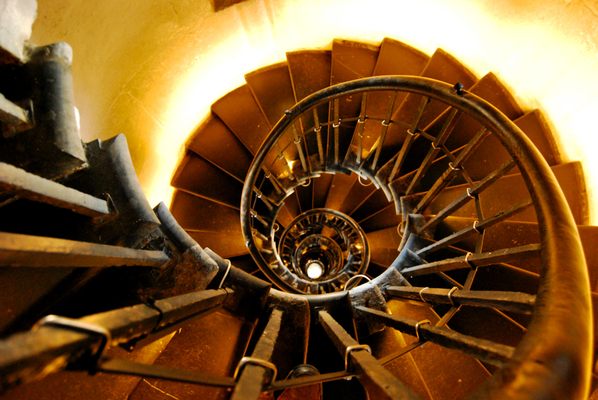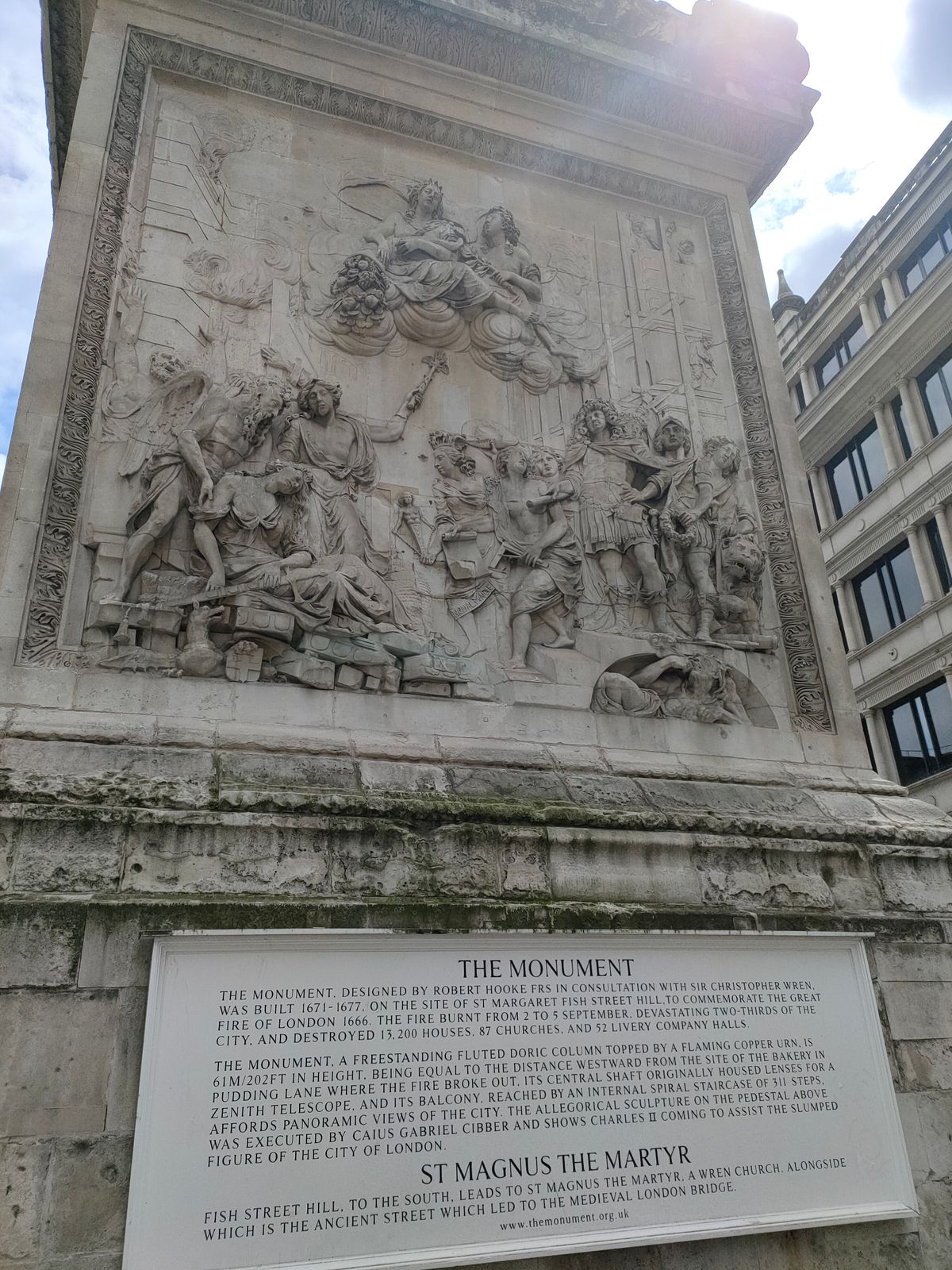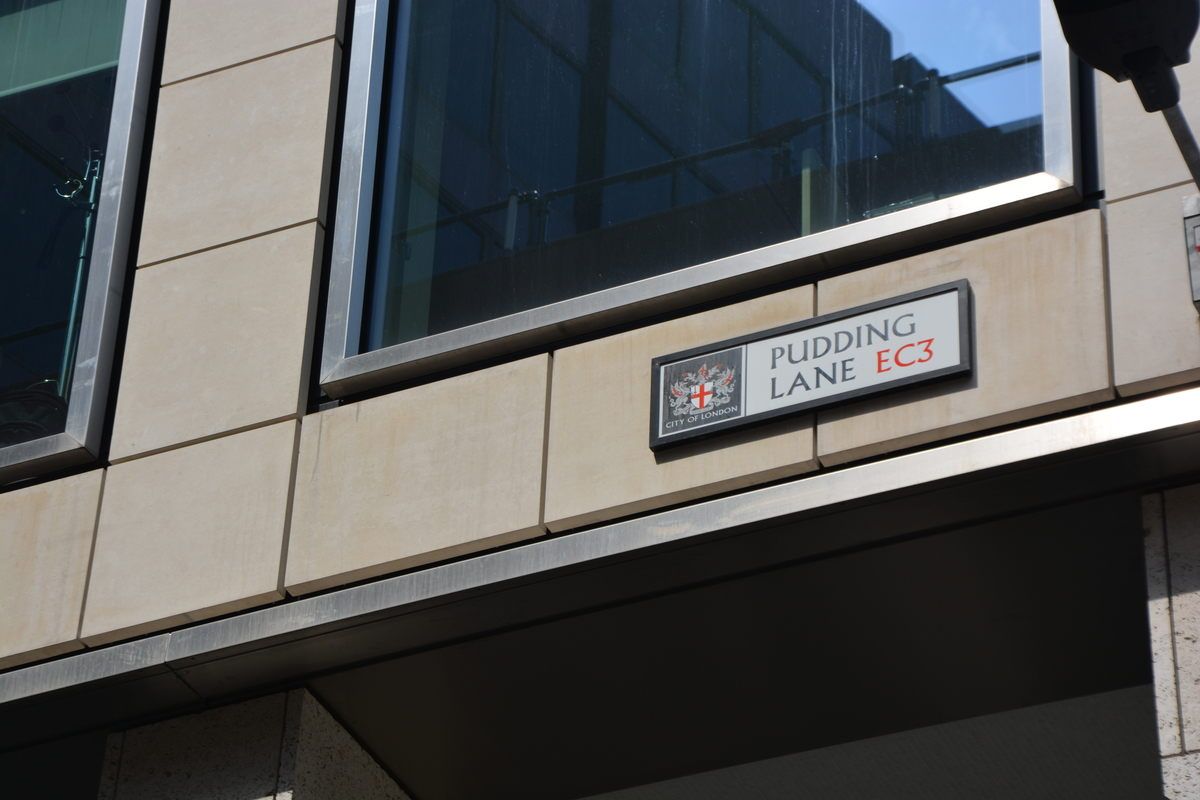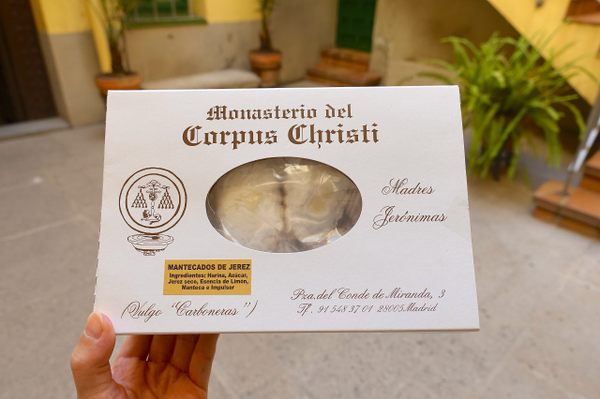About
Known simply as "the Monument," this distinctive London landmark was built to commemorate one of the most prominent events in the capital's history, the Great Fire of 1666. Rising from a pedestal between Monument Street and Fish Hill, it invites guests to climb a winding staircase to enjoy spectacular birds-eye views over the metropolis. Little known, however, is that this lofty pillar serves an ulterior purpose. Primarily, this 17th-century memorial was in fact intended to be used as a scientific instrument.
This Portland stone Doric column is crowned with a flaming gold orb, symbolic of the Great Fire. Constructed between 1671 and 1677 it is considered to be the tallest isolated stone column in the world.
The monument was designed by Robert Hooke, together with his colleague and good friend Christopher Wren. Foremost, Hooke and Wren were both scientists. Their collaboration on this project opened up a window of opportunity, and the pair planned for the Monument to have dual functionality, firstly as a scientific instrument and secondly as a memorial.
Still intact today, beneath the Monument, is a small subterranean laboratory where scientists could hunker down and set to work conducting their experiments. This circular stone chamber can only be accessed by opening a hidden hatch at ground level and descending down a secret staircase. A hole in the center of the lab's domed roof lines up precisely with the cylindrical void of the corkscrew staircase above revealing a clear view up to the highest point in the building, the golden orb. Concealed inside this gilded adornment are two small trapdoors, which when open look up to the sky. With an unobstructed view from the basement lab into the sky, this column was perfectly designed for use as a colossal zenith telescope to monitor the stars and night sky.
Sadly, the experiments failed mainly due to the vibration of the busy traffic in the area, but what is left is a wondrous view of London. The memorial soars to a towering height of 202 feet, which is equal to the distance between the Monument and the bakery on Pudding Lane where the fire began. If you were to lay the structure down on it's side, it would point to Thomas Farynor's bakery. Pudding Lane refers to blood sausage, that was made in the area, rather than a dessert. Its 311 helter-skelter-style steps twist up to a public viewing platform at the top.
Related Tags
Know Before You Go
From Monument station, turn left at the exit barriers, signposted for the monument.
The laboratory is usually out of bounds to the public except by special arrangement. The monument is open daily to the public from 9:30 until 5:30 (last admission). It is closed from December 24 through 26th. For admission prices, please see the website. The monument does not have a lift and is unsuitable for people with mobility difficulties or wheelchair users.
All patrons are presented with a free keepsake certificate on completing the climb.
Community Contributors
Added By
Published
August 21, 2019
































































